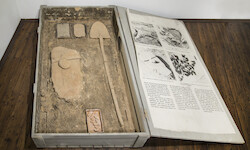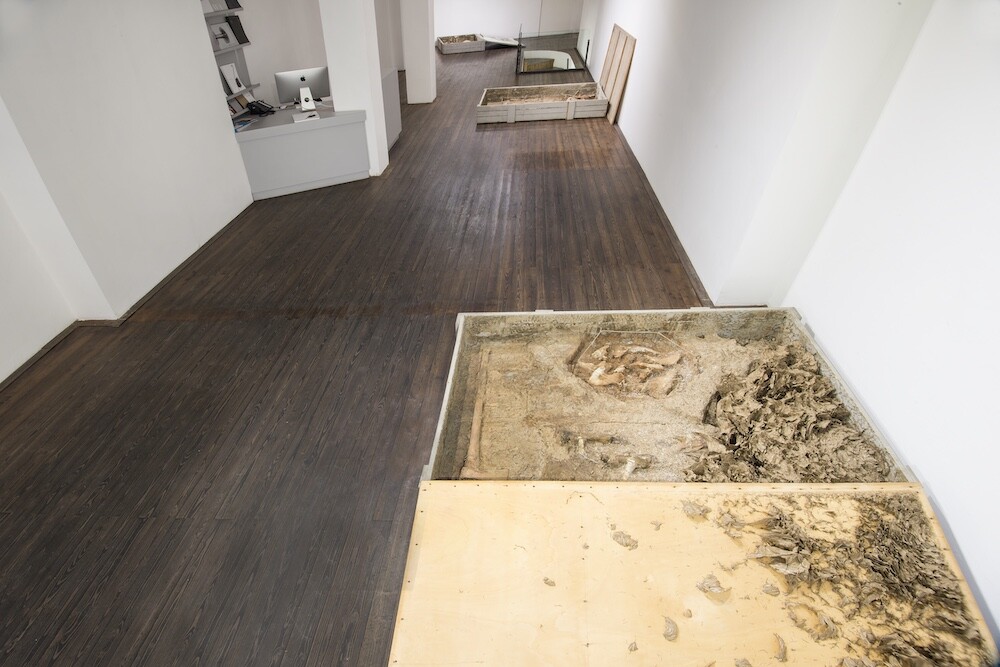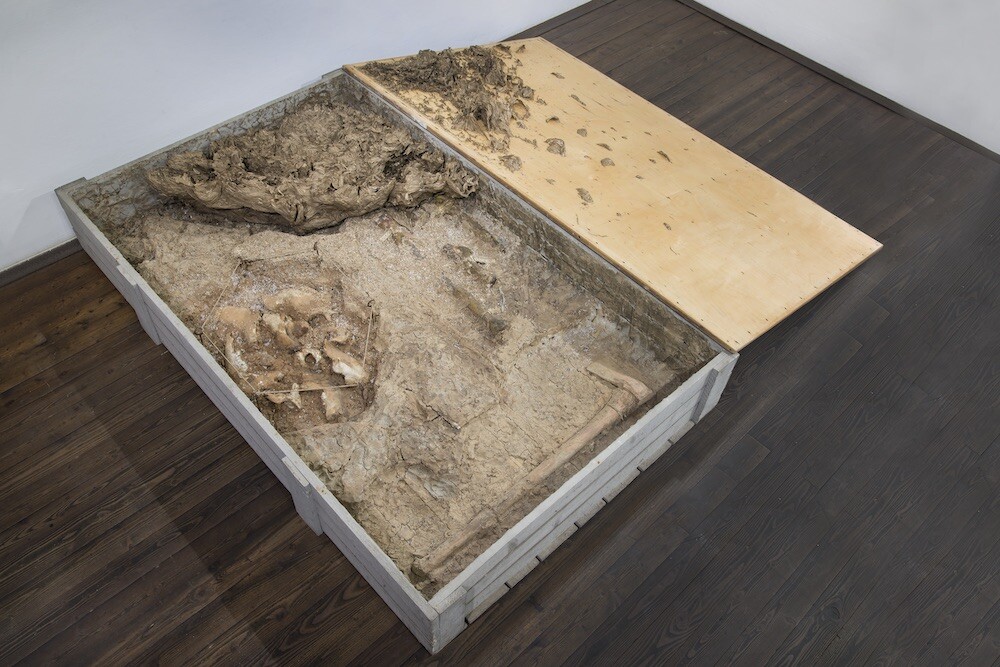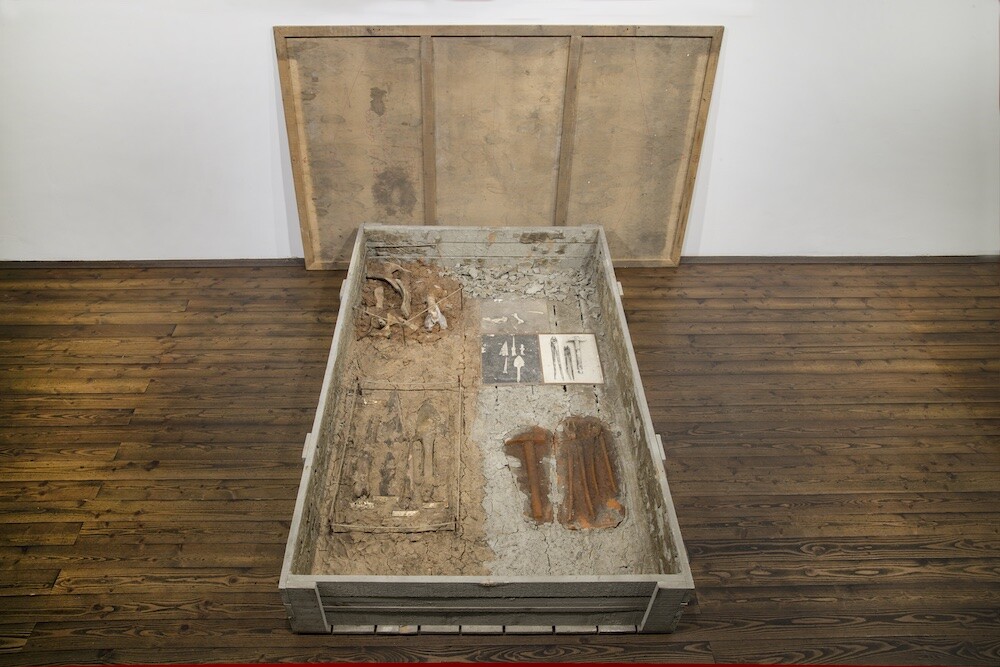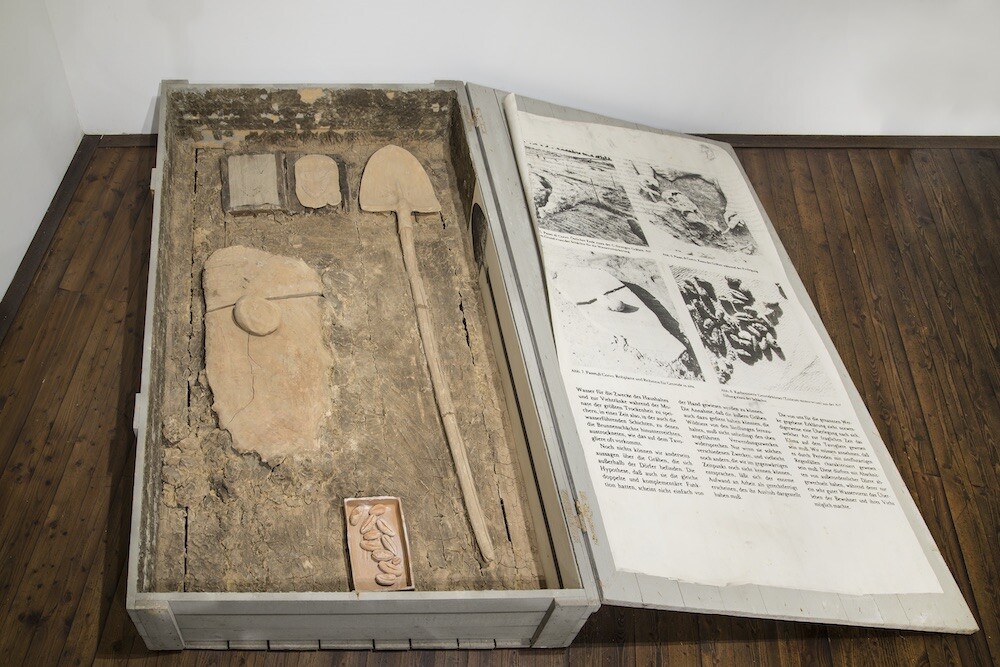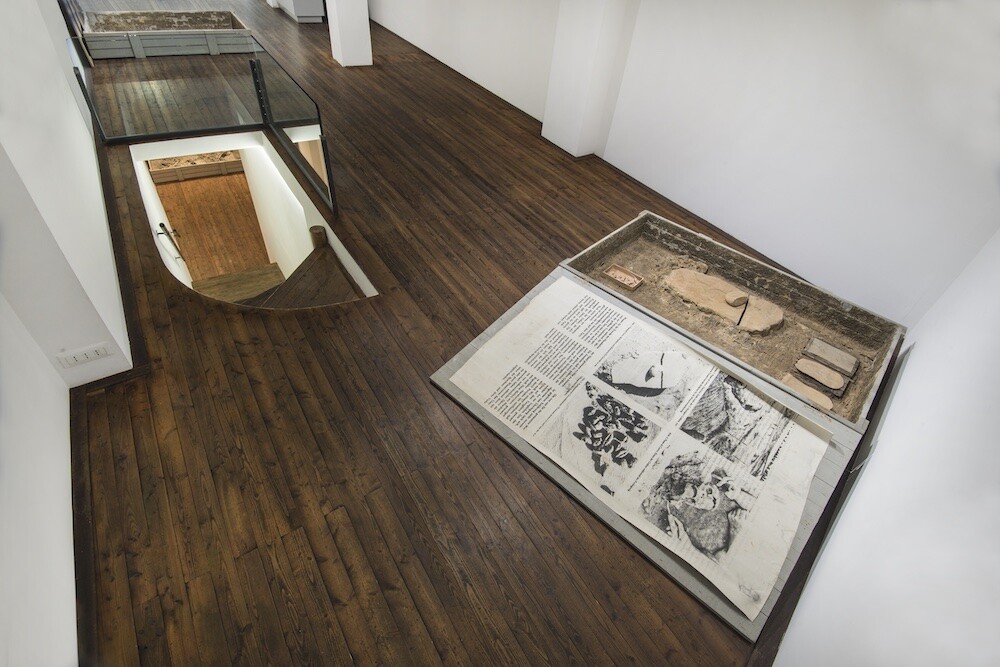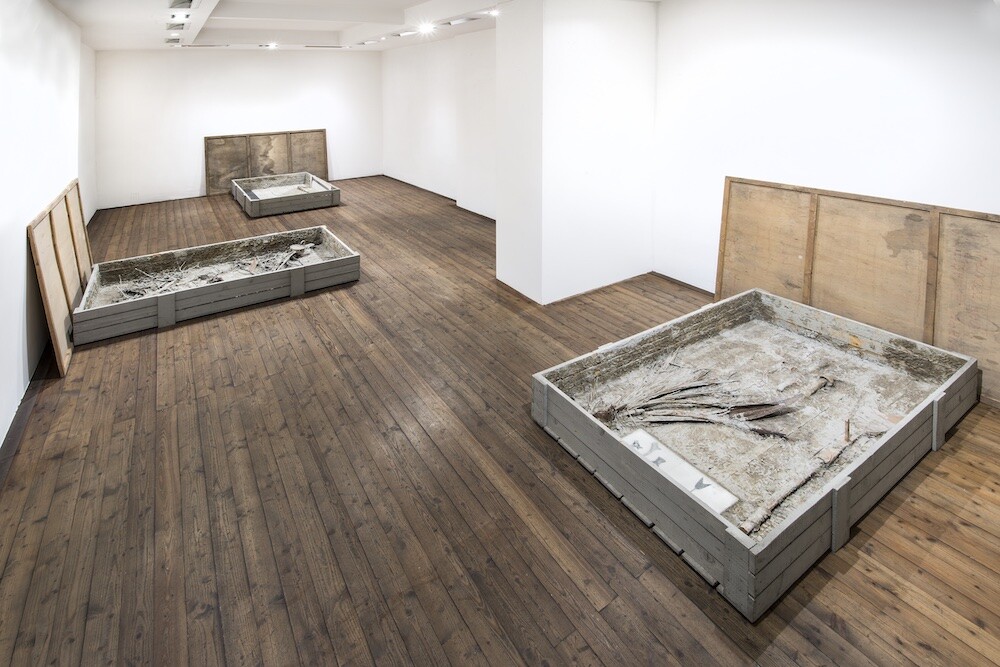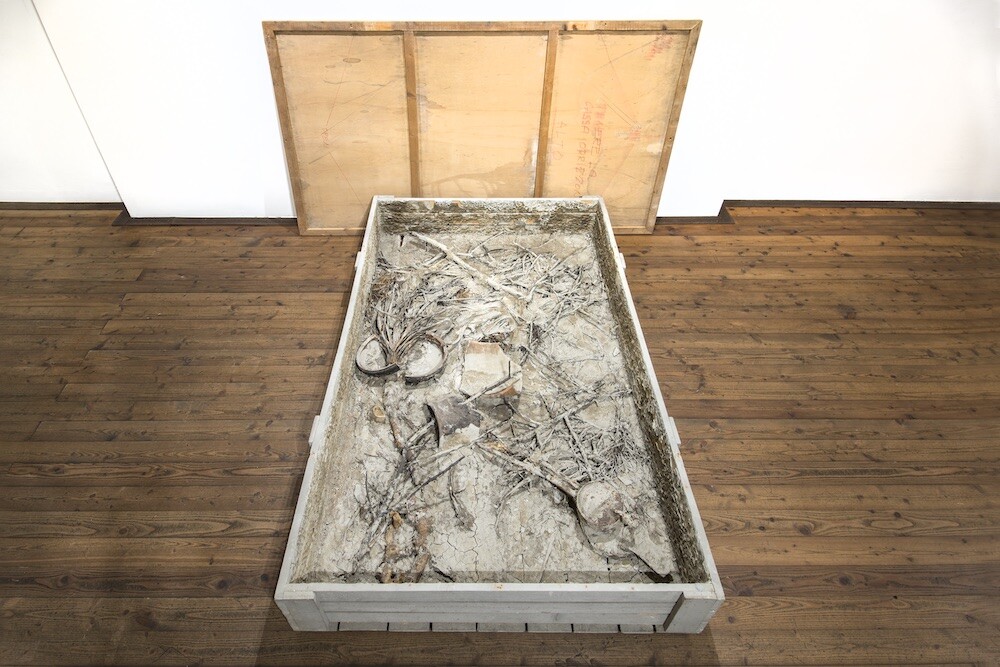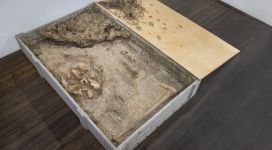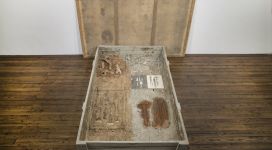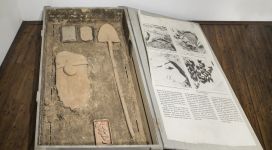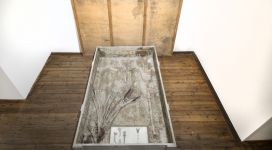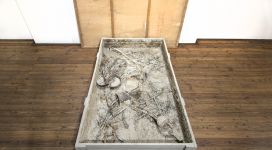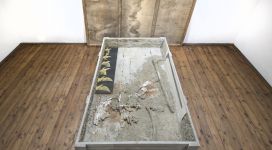| CLAUDIO COSTA | Biography | |
| antropologia riseppellita | browse the Magazine | |
| Doumenta 6 – Kassel 1977 | ||
| curated by ANDREA ALIBRANDI | ||
| In collaboration with Archivio Claudio Costa | ||
| 12 november – 30 december 2021 |
Galleria Il Ponte is dedicating a solo exhibition to Claudio Costa, with a selection of historic works that take a snapshot of a fundamental moment in his research and career. The series Antropologia riseppellita (Reburied Anthropology), presented in 1977 at the sixth Documenta in Kassel, marks the completion of the anthropological research that engaged the artist in the 1970s and led to his creation of the Museo di Antropologia Attiva (Museum of Active Anthropology) in Monteghirfo in Liguria. By applying his idea of “work in regress”, in Antropologia riseppellita Costa “buries” the relics that typically feature in his works, proposing them to the public in wooden crates covered in mud. Therefore, rather than being found, the relics are thus “endorsed” by the artist’s action, giving them a story and symbolic value. Farm equipment and photographs of the peasant world become a sort of archive and at the same time a warning for the future of the industrialized and massified world. A trait shared by all the artist’s works is the balance between the coarseness of expression and formal accomplishment, here at its zenith.
“Claudio Costa’s ‘objects’ are tools, the simulacra and emblems of farming on this earth; tools and symbols of a bygone and irretrievable time; tools of death, fatigue and symbiosis of humans and animals, humans and the land. To save the world that they represent, we can only save its symbols, and to save them, we can only give them back to the earth’s womb, rebury them like an archaeological relic” (Corrado Maltese, exhibition catalogue, Antropologia riseppellita, Galleria Nuova 13, Alessandria, March 1977).
